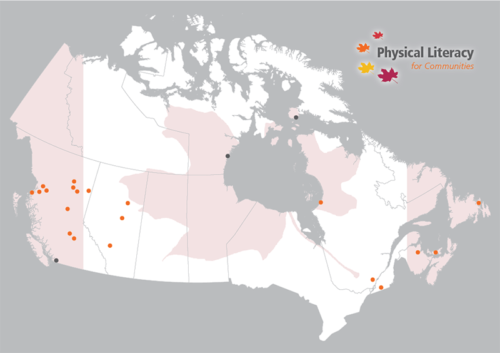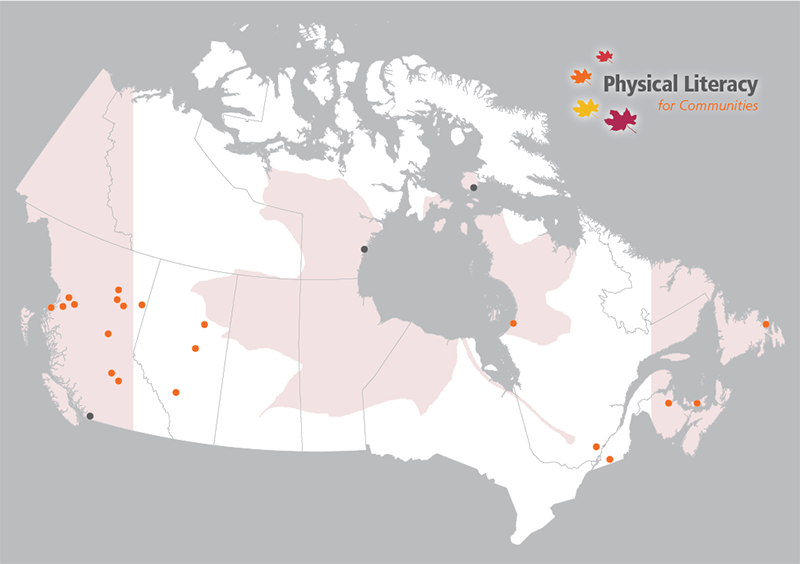The Physical Literacy for Communities project gains momentum country-wide

The Physical Literacy for Communities (PL4C) initiative has mobilized all over the country, with numerous working tables being created to collaboratively establish a culture of healthy living and physical activity. And now that Sport for Life has teamed up with the Public Health Agency of Canada, the initiative is even better positioned to help create collaborative partnerships at the local level between the health, recreation, education, sport and media sectors.
This will enable communities to broaden the physical activity opportunities available to the population. In past iterations of the PL4C program, communities came together to create a program for newcomers, introduced a hospital program to help post-operative patients regain their mobility, and provided shoes for Indigenous students that needed them.
The objective of PL4C in partnership with the Public Health Agency of Canada is to support the development of physical literacy in approximately 150,000 children and youth between the ages of 2 to 18 in select communities in B.C., Alberta, Ontario, Quebec, Nunavut and Atlantic Canada. This 36-month project aims to:
- increase community partnerships and multi-sectoral collaboration.
- increase understanding of physical literacy.
- increase the community’s capacity to support physical literacy activities
- improve physical literacy among the targeted population
- increase physical activity
- conduct physical literacy observations and help provide real-time feedback for schools and community programs aiming to develop the physical literacy of their children and youth.
- complete 50,000+Physical Literacy forYouth observations through the training of 50+ trained observers.
Once the community partner table has been created, the next step is capacity-building followed by physical literacy assessments. The capacity-building element consists of mobilizing eLearning, webinars, conferences and resources to educators, teachers and coaches. The assessments will provide real time feedback to community and school programs in select communities, with the results being compiled into a Pan Canadian physical literacy database. The data will be collected and evaluated to measure the development of physical literacy in young participants.
“The interesting thing about the PL4C project is that while we support these communities in their physical literacy journey, they pick their own milestones and objectives that align with the unique needs of their community. We are really excited to see how the different communities will build further collaboration and have lasting positive impact,” said Kim Samson, Manager of PL4C and Francophone Engagement at Sport for Life.
“It’s also crucial to this project that we ensure we’re reaching everyone, which is why equity, diversity, inclusion and accessibility have been interwoven into everything we do. We’re still in the early stages, with many of our working tables just beginning to coalesce, but there is an extraordinary amount of excitement about what we could possibly accomplish.”
Now, at the end of its first year, PL4C is celebrating a host of new communities that have signed agreements and are beginning to form their partner tables.
The PL4C initiative has reached the follow communities:
British Columbia
- Prince Rupert, B.C.
- Terrace, B.C.
- New Hazelton, B.C.
- Smithers B.C.
- South Surrey / White Rock, B.C.
- Williams Lake, B.C.
- Takla Lake First Nation, B.C.
- 100 Mile House, B.C.
- Prince George, B.C.
- Hudson’s Hope, B.C.
- Chetwynd, B.C.
- Dawson’s Creek, B.C.
- Halfway First Nation, B.C.
Alberta
- Calgary, Alta.
- Edmonton, Alta.
- Calling Lake, Alta.
Quebec
- Lanaudiere, Que.
- Bromont, Que.
- Kuujjuarapik, Que.
Nunavut
- Arviat, Nunavut
- Kinngait, Nunavut
Atlantic Canada
- Prince Edward Island
- Miramichi and Kent County, N.B.
- Port Rexton, Nfld.
Stay tuned for a PHAC webpage coming soon, and for updates as more communities join PL4C!

